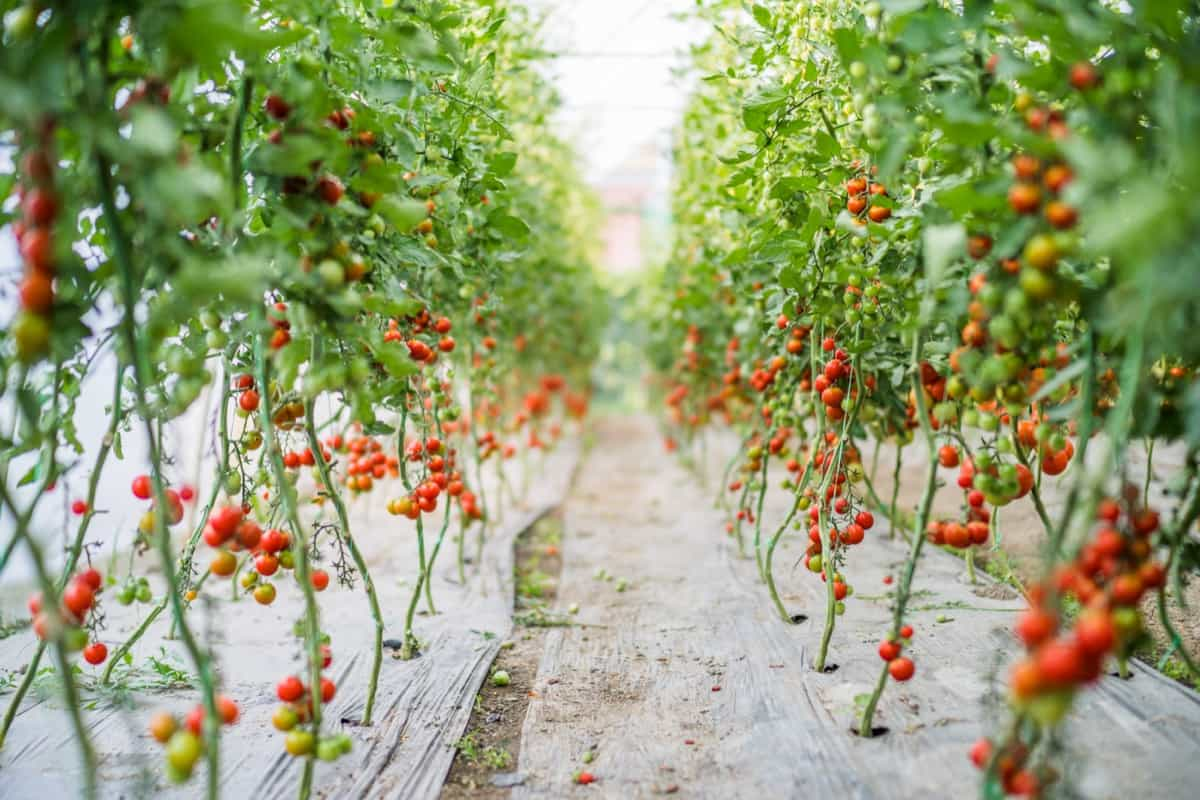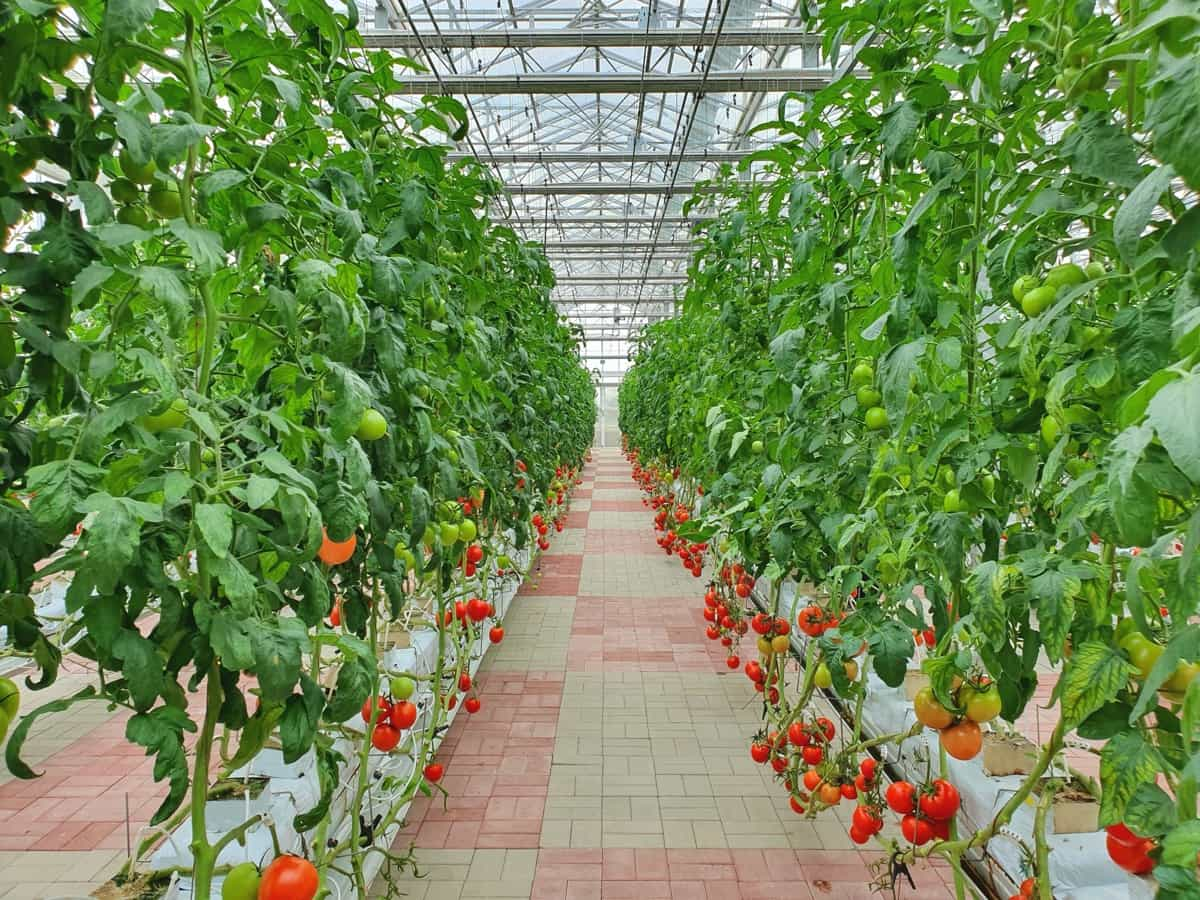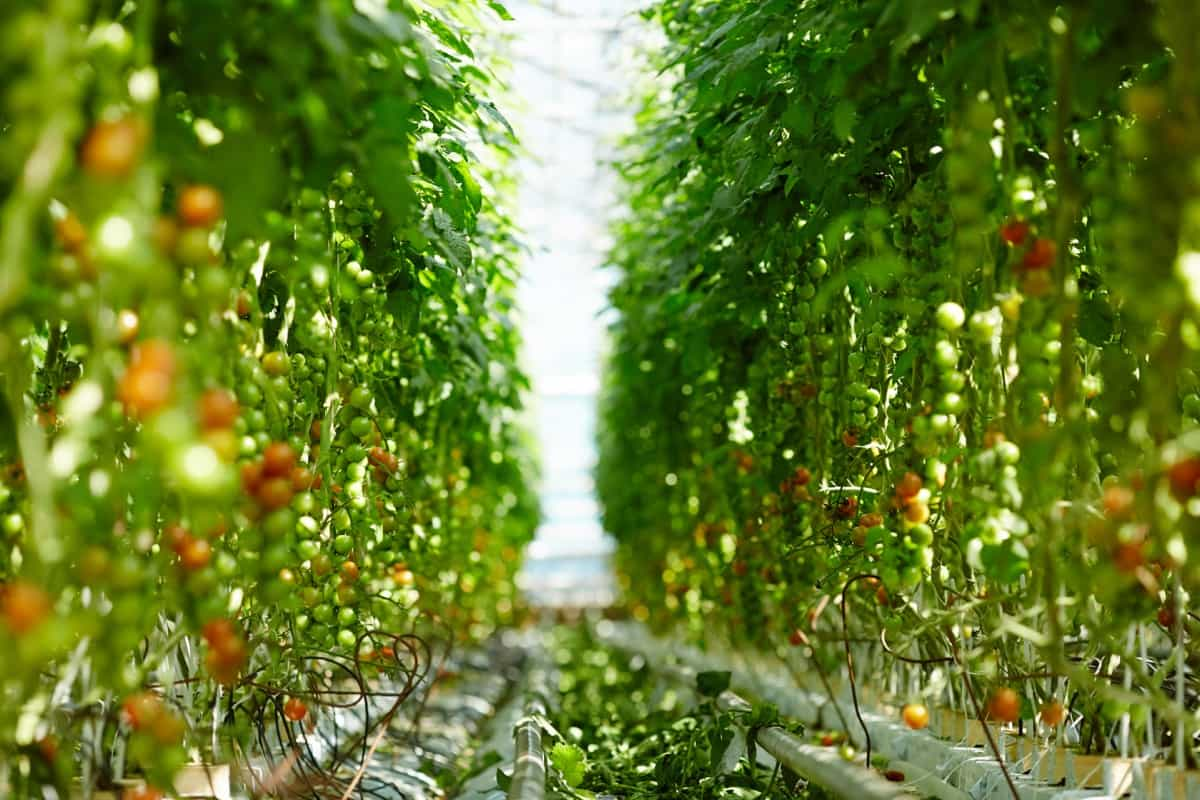Various innovative technologies and strategic methods are utilized to maximize tomato yields with precision farming. Precision farming is crucial in optimizing agricultural practices, improving crop health, and boosting productivity. These techniques include soil sensors, crop monitoring systems, precise planting strategies, weather forecasting tools, soil pH and EC level analysis, vertical farming methods, and drone technology.

This integration of techniques allows for cultivating tomatoes in conditions that are meticulously monitored and adjusted for optimal growth, ensuring that each plant has the best chance to thrive.
Maximize Tomato Yields with Precision Farming
Using Soil Sensors to Optimize Irrigation and Nutrient Management for Better Tomato Production
Soil sensors are instrumental tools in precision farming that aid in maximizing tomato yields. These sensors help monitor the soil’s moisture levels and nutrient content, ensuring that the tomatoes receive just the right amount of water and essential nutrients. By accurately determining the soil’s moisture content, irrigation can be optimized to prevent over-watering or under-watering, ensuring that the tomato plants receive consistent and adequate hydration.
Additionally, soil sensors can identify the specific nutrient needs of the soil, allowing for more targeted and effective fertilization. This means the tomato plants get precisely what they need for healthy growth, promoting a more bountiful harvest.
Implementing Crop Monitoring Systems to Detect Early Signs of Stress and Disease in Tomatoes
Crop monitoring systems are essential in detecting early signs of stress and disease in tomato plants. These systems utilize various sensors and cameras to closely monitor the crop’s condition, ensuring any signs of distress are quickly identified and addressed.
Implementing these monitoring systems makes it possible to take rapid action against potential threats such as pests or diseases, thereby minimizing their impact and preventing widespread issues. This early detection and prompt action ensure that the tomato plants remain healthy and vibrant, contributing to maximized yields and better overall production.
Applying Precision Planting Techniques to Ensure Proper Spacing and Sunlight Exposure for Maximum Yields
Precision planting techniques ensure that tomato plants are given the proper spacing and sunlight exposure to thrive. This means you need to plan where to put each plant so they’re not too close together and get enough sunlight. Proper spacing allows the plants to grow without competing excessively for resources, while optimal sunlight exposure ensures that they can carry out photosynthesis efficiently. By applying these precise planting techniques, the tomato plants can grow more vigorously and produce a more abundant harvest, contributing to maximized yields.
In case you missed it: Tomato Farming with Mulch: How to Use Organic Materials for Better Soil Health and Yield

Leveraging Weather Forecasting Tools to Anticipate and Adapt to Changing Environmental Conditions for Ideal Tomato Growth
Weather forecasting tools are indispensable in precision farming for adapting to changing environmental conditions to maximize tomato yields. These tools give important weather info so farmers can make smart choices about watering, fertilizing, and taking care of crops. By anticipating weather changes, necessary adjustments can be made in advance to protect the tomato plants and ensure their continued healthy growth despite varying weather conditions. This adaptability allows the tomatoes to thrive in a more stable and supportive environment, leading to improved yields.
Analyzing Soil pH and EC Levels to Adjust Fertilization Programs for Improved Tomato Quality and Quantity
Analyzing soil pH and EC (Electrical Conductivity) levels is a fundamental aspect of precision farming to enhance tomato production. Monitoring and adjusting the soil’s pH and EC levels allow for the customization of fertilization programs to meet the specific needs of the tomato plants. The tomatoes can absorb nutrients more effectively by ensuring that the soil conditions are ideal, promoting healthier growth and a more bountiful harvest. Properly analyzed and adjusted soil conditions pave the way for improved tomato quality and quantity, maximizing the overall yield.
Incorporating Vertical Farming Methods for Efficient Use of Space and Resources in Tomato Production
Vertical farming methods stand as innovative approaches in precision farming to maximize tomato yields efficiently. Growing tomatoes vertically promotes efficient use of space, allowing for more plants to be cultivated in a limited area. This method also facilitates better air circulation and sunlight exposure for each plant, promoting healthier growth. Vertical farming in tomato production ensures that resources are used efficiently, leading to maximized productivity and yield in a confined space.
Utilizing Drone Technology for Precise Crop Scouting and Rapid Disease Diagnosis in Tomato Fields
Drones are transformative tools in precision farming, enhancing the ability to scout crops accurately and diagnose diseases rapidly in tomato fields. Equipped with advanced imaging technologies, drones can quickly identify areas of stress, pest infestation, or disease in the tomato crops. This allows for fast and targeted action to address issues, ensuring that the plants receive timely care and intervention. Utilizing drone technology ensures that tomato plants are monitored closely and maintained in optimum health, leading to maximized yields and improved production outcomes.
In case you missed it: Tomato Farming with Cover Crops: How to Use Legumes for Better Soil Health and Yield

Implementing Precision Irrigation Strategies Based on Real-Time Weather Data and Soil Moisture Sensors
Utilizing precision irrigation strategies orchestrated by real-time weather data and soil moisture sensors enhances water use efficiency in tomato farming. These strategies allow for the dynamic adjustment of irrigation schedules based on the immediate needs of the crop and prevailing weather conditions. The synergy of weather data with soil sensors enables the right amount of water delivery at the right times, optimizing plant growth and maximizing tomato yields.
Integrating Machine Learning Algorithms with Precision Farming Technologies for Enhanced Tomato Yield Predictions
Combining machine learning algorithms with precision farming technologies revolutionizes tomato cultivation by improving yield predictions. These algorithms analyze extensive datasets, identifying patterns and enabling informed decision-making based on predictive analytics. Such an approach enhances the precision and effectiveness of farming strategies, allowing for adjustments that align with anticipated conditions and factors, thus improving the likelihood of achieving maximum tomato yields.
Optimizing Harvesting and Post-Harvest Handling Practices to Minimize Losses and Maximize Profits in Tomato Production
Optimization of harvesting and post-harvest handling is crucial for maximizing profits in tomato production. Implementing precise and timely harvesting techniques ensures that tomatoes are collected at optimal ripeness, preserving their quality. Furthermore, careful post-harvest practices, including gentle handling and appropriate storage, minimize losses due to damage or spoilage, ensuring that a greater volume of high-quality tomatoes reach the market and enhance profitability.
Frequently Asked Questions (FAQ) on Maximize Tomato Yields with Precision Farming
Does Precision Farming Increase Yield?
Yes, precision farming significantly increases yield by optimizing various agricultural practices. Utilizing technology such as soil sensors and drones enhances decision-making, improves resource efficiency, and elevates overall crop health and productivity.
Which is the Most Important Technique in Precision Farming?
It’s challenging to pinpoint the single most important technique in precision farming, as the effectiveness of various strategies depends on specific crop needs and environmental conditions. Combining multiple technologies like soil sensors, machine learning, and precision irrigation often yields the best results in optimizing crop production.
In case you missed it: Summer Tomato Farming: Instructions to Grow Tomatoes in the Hottest Months

How Precision Farming Increases Yield of Horticultural Crops?
Precision farming elevates the yields of horticultural crops by enabling more precise management of resources and care practices. It allows for customizing irrigation, fertilization, and pest control based on real-time data and analytics, ensuring that crops receive tailored care that boosts overall productivity and health.
Conclusion
Precision farming is a cornerstone in modern agriculture, merging technology with traditional practices to optimize crop health and maximize yields. It fosters a more sustainable and productive agricultural landscape, ensuring that each phase, from planting to harvest, is meticulously managed and enhanced through data-driven decisions.
- Feed Your Flock for Less: Top 10 Tips to Save on Chicken Feed
- Ultimate Guide to Ossabaw Island Hog: Breeding, Raising, Diet, and Care
- Hatching Answers: The Top 10 Reasons Your Chickens Aren’t Laying Eggs
- Eggs and Economics: Breaking Down the Cost of Raising Backyard Chickens
- Defend Your Greens: Proven Methods to Keep Iguanas Out of Your Garden
- Ultimate Guide to Cinnamon Queen Chicken: A Comprehensive Guide for Beginners
- Ultimate Guide to California Tan Chicken: Breeding, Raising, Diet, Egg-Production and Care
- Ultimate Guide to Marsh Daisy Chicken: Breeding, Raising, Diet, and Care
- 10 Types of Chicken Farming Businesses You Can Start for Profits